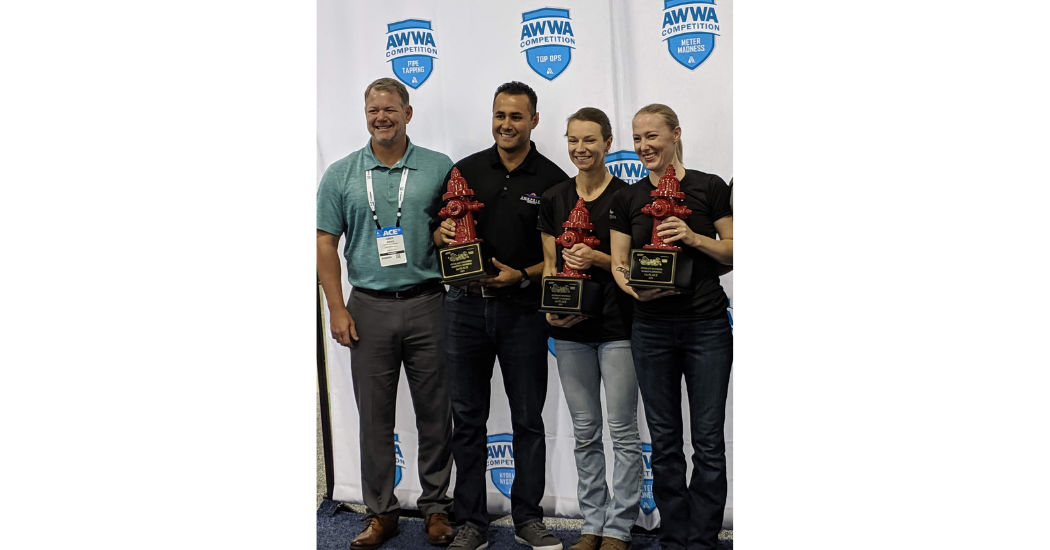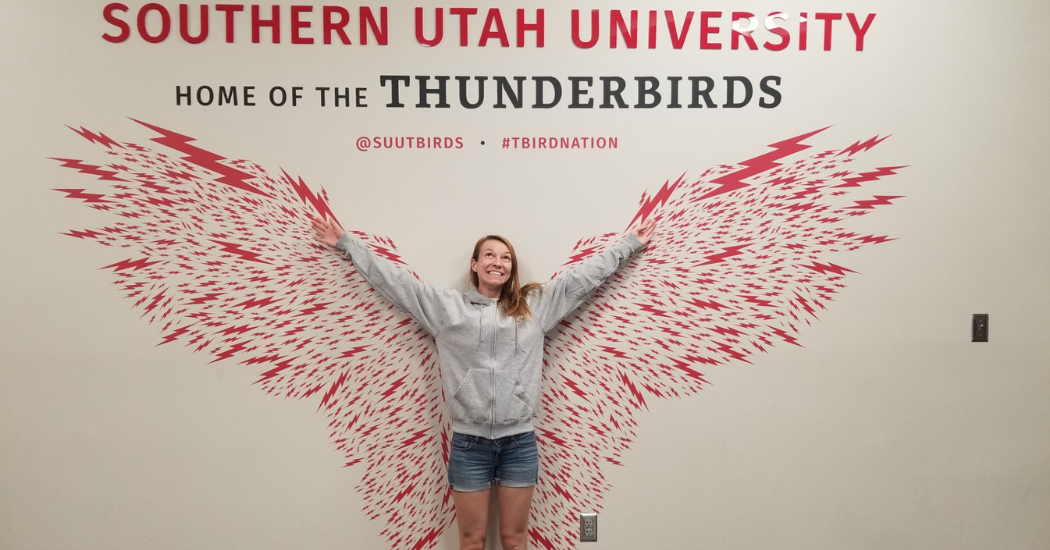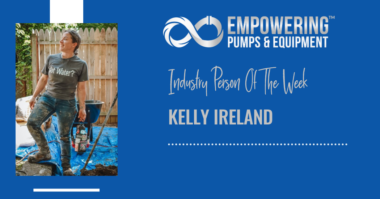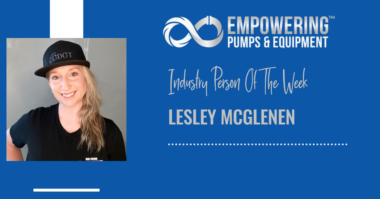Science has always been my favorite subject to explore, and being a Minnesota native, water was a part of daily life. Not having a pond, lake, stream, or river in sight at some point during the day is highly unusual. But like most Americans, I turned the tap on without a thought as to how water arrived there.
After a series of unfortunate personal events, a conversation with my father directed me into the industry. I returned to Minnesota three years after leaving for Utah to participate in the University’s Division 1 Track and Field team while pursuing my Bachelors. I returned with an Associates of Science, a nine-month-old, no clue how I would establish myself professionally, and a defeated mindset. Fortunately, I also had my parent’s support and encouragement. My father encouraged me to look at a Water Treatment program at the local Technical and Community College. I decided to visit during an open-house event which would allow me to meet the instructors, as well as see the environment. After returning home, I submitted my enrollment for the next semester.
During this program, I was the first to show up, the last to leave, and also came in every Friday which was an optional lab day. I dove into learning mechanics, treatment technologies, and laboratory practices for Water and Wastewater without hesitation, knowing this amount of attention and time would lay the foundation for my future success in the industry. The program started with nineteen students, and nine graduated. I was at the top of my class, with my Grade 1 certifications and my Associates of Applied Science in Water Environment Technologies. Before graduating I had two job offers, accepting one at my hometown’s surface water lime softening water treatment plant.
After two weeks, I accepted another position in a neighboring City. I operated and maintained three groundwater plants with green sand filtration, gas chlorination with both 150lbs and 1-ton cylinders, and fluorination within three pressure systems, each with a designated water tower as their only source of storage. I developed my skills further through practices of sampling, distribution system maintenance, collections system maintenance including ten lift stations, meter reading and replacement, curb stop locating, delinquent shut off’s and service turn-ons, new service inspections, water bill payment collection, servicing two wading pools, plowing snow, and served on the safety committee. I also took it upon myself to update SOPs as well as the City’s GIS mapping.
My career path then relocated me to Arizona where I temporarily worked in a City’s Water and two Wastewater plants. During this time, I discovered the Pretreatment sector and knew it was something I needed to pursue at some point in my career. I continued my work as an Operator for another City’s Water Department. I operated six groundwater plants each on their own pressure system, sampled and ran laboratory tests, maintained an irrigation pond with my own pilot project, increased my certification levels, and became one of the National Hydrant Hysteria Champions.
 Another relocation to California occurred after accepting a position as a Pretreatment Program Technician, allowing me to develop my Pretreatment skills under a unique program, while also obtaining my California Water Environment Agency Environmental Compliance Inspector I certification. I currently work as a Water Treatment Plant Operator III at Jurupa Community Services District (JCSD). JCSD operates facilities—Chino II and the Concentrate Reduction Facility (CRF)—which are part of the Chino Basin Desalter Authority (CDA), a Joint Powers Authority comprised of eight member agencies. Chino II treats brackish groundwater from one of the largest aquifers in Southern California through Reverse Osmosis (RO), and Ion Exchange (IX), before sending some RO process waste (concentrate) to the CRF. The CRF uses two types of softening processes to remove calcium, magnesium, and silica before being treated once more through RO. The final plant effluent is recirculated back to Chino II and blended with its product water.
Another relocation to California occurred after accepting a position as a Pretreatment Program Technician, allowing me to develop my Pretreatment skills under a unique program, while also obtaining my California Water Environment Agency Environmental Compliance Inspector I certification. I currently work as a Water Treatment Plant Operator III at Jurupa Community Services District (JCSD). JCSD operates facilities—Chino II and the Concentrate Reduction Facility (CRF)—which are part of the Chino Basin Desalter Authority (CDA), a Joint Powers Authority comprised of eight member agencies. Chino II treats brackish groundwater from one of the largest aquifers in Southern California through Reverse Osmosis (RO), and Ion Exchange (IX), before sending some RO process waste (concentrate) to the CRF. The CRF uses two types of softening processes to remove calcium, magnesium, and silica before being treated once more through RO. The final plant effluent is recirculated back to Chino II and blended with its product water.
The ability to remain adaptable has been essential to my career skillset growth. Staying open to new methods to complete a task more efficiently, volunteering to do or learn something completely new, discovering new things on topics I am already familiar with, and the ability to openly and honestly evaluate my skillsets has allowed me to become more effective and grow. Changes will always occur, and I believe it is essential people shift as well to not only better themselves, but to better the communities they are a part of.
The industry workplace is changing due to generational shifts as well as cultural and gender diversification. Knowing this dynamic was becoming reality while pursuing my AAS, I tailored the focus of my Bachelors to psychology. I wanted to be prepared to make a difference on any team and I wanted to learn how to create the most conducive environment for each individual based on core needs. I believe providing tailored support is how to help people reach their full potential as it looks different depending on personality and core needs. I’ve found it easier to communicate when personalities and core needs are prioritized regardless of generation, gender, or cultural identifications. If I had one hope for the future across industries, it would be for management choices to implement more inclusive methods to attract and retain the changing workforce. I believe this to be the starting point which leads to more industry attraction in young people, since the vast majority of exposure comes from parents, friends, and family. If the focus was on making those current parents, friends, and family members happy by having their individual core needs met, and ambitions supported, there would be a higher likelihood of recommending the same type of career for their child. I believe that is the first step in creating more industry knowledge and awareness, instead of just turning on the tap and not understanding how water got there.
Connect with Jaclyn on LinkedIn: www.linkedin.com/in/jaclyn-alm





Comments